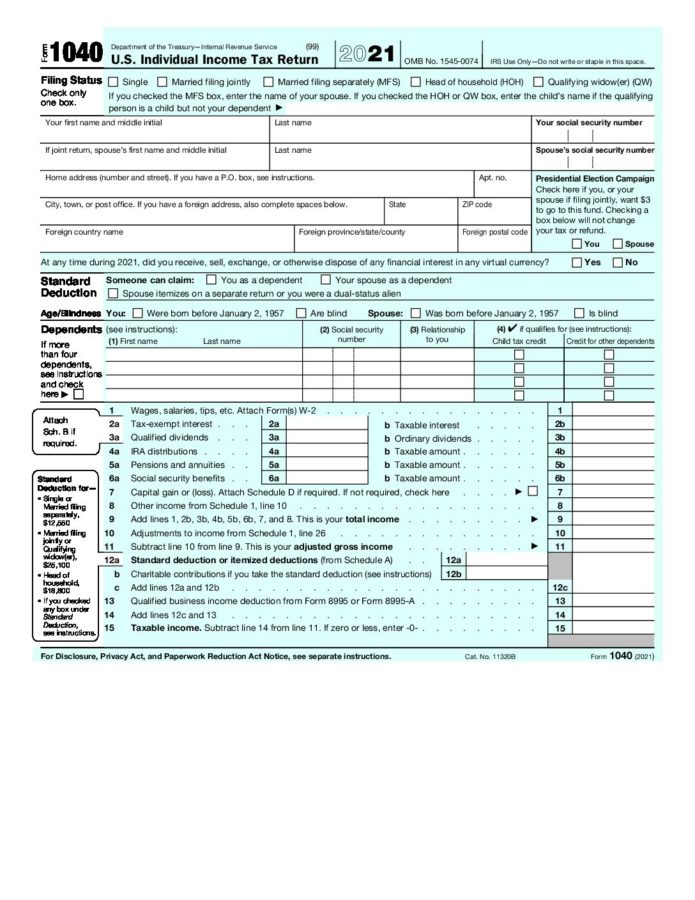Adult Life is Taxing on Teenagers
April 7, 2022
For seniors at West High, the real world is a close reality. With the future comes many stressful responsibilities. One of these being taxes. However, many seniors leave high school without having any knowledge of taxes and are left to figure it out themselves. Let us prepare our seniors here at West High for this real-world responsibility.
What are taxes?
We need to start with the definition of taxes. A federal tax return is a tax return you send to the Internal Revenue Service (IRS) each year through a form called Form 1040. It is an official document you fill out that determines your total taxable income and if you owe additional taxes or if you will receive a tax refund. The money the government receives from you through tax returns is used to improve and maintain public infrastructure, fund public services (such as schools and emergency services) and pay government workers.
Where Do I Start?
First, you need to determine if you need to file a tax return. According to the IRS, most U.S. citizens and permanent residents who work in the United States need to file a tax return if they make at least $12,550 (as of 2021). If this applies to you, you can begin to fill out Form 1040. This can be done online or manually. According to the IRS, filing your tax return electronically
is “faster, safer and more accurate.” However, if you still wish to fill it out manually, you will need to go to the IRS website (irs.gov) for the PDF.
What to Include on Your Tax Return
Before you begin to fill out the form, you need to gather important documents that you will include on your tax return. One of these documents is the W-2 form. You should receive this from your employer. The W-2 form shows your total wages for that year and amount of taxes that were withheld from your paycheck. This form is required to be included in your federal tax return. If you will be a college student in 2022, you should expect to receive Form 1098-T and Form 1098-E from your college. Form 1098-T shows the tuition you paid the previous year and Form 1098-E reports any student loan interest payments. While Form 1098-T and Form 1098-E are not required to be included in your federal tax return, it can be helpful as it may help you claim education credits and fee deductions on your tax return. Now, with all these forms, you can start filling out Form 1040.
What Goes onto Form 1040?
Several pieces of information go onto the form. The first half of Form 1040 asks for basic information. This information consists of filing status, identification, social security number, etc. Continuing the first page of the form, you will report your income from the previous year. You will also include deductions. Deductions consist of medical and dental expenses, state and local taxes and job expenses. By listing these, it will decrease your total taxable income. This lowers the amount of tax you owe. On the second page of the form, you will calculate your tax. Areas of this form will not apply to you, and you will just leave it blank.
Submitting Form 1040
When you are done completing Form 1040, you will sign it. If you filled it out manually, you can either mail it or drop it off at an IRS office. To mail it differs by state. Check the IRS website for the address according to the state you live in. Federal taxes are typically due in April. Since the date is subject to change every year, check the IRS website for the due date. Make sure you submit your tax return in time or else you will be charged with the Failure to File Penalty by the IRS.
Things to Remember
This process will change as you own property, own a business, get married, and/or have children, etc. Always refer to the IRS official website for the most accurate information on how to tackle these new changes. Also refer to the website if you are still left with questions regarding this process.

